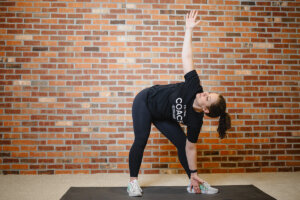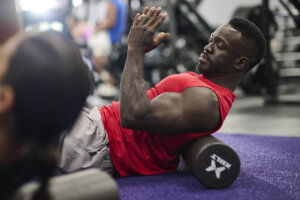We’ve all been there: You’re on a roll with your workouts, trying a new strength-training move or adding more weight to an existing one when…bam!, you strain a muscle. You’re in pain, and out of commission.
Though a muscle strain can be a frustrating setback, it’s important to listen to your body and give it what it needs to recover. The good news is that there are plenty of steps you can take to speed up muscle recovery, ease muscle soreness, and get back to those workouts faster.
Here are some tips to help speed up muscle recovery and relieve sore muscles fast, including ways to reduce swelling, pain, and inflammation — plus, how to know if physical therapy or help from a medical professional is necessary to help the healing process.
What is a muscle strain?
A muscle strain is an injury to a muscle or tendon that occurs when your muscle fibers get torn or overstretched. It can happen from overtraining, improper form, or just by accident — and different muscle groups may require longer healing times than others.
Signs of muscle strain
Think you may have strained something? Here are some signs that you’re dealing with a muscle strain.
- Pain: This is usually the first indicator of a muscle strain. The pain may be sharp or dull, worsening with movement. It should be noted that if your pain is severe or unmanageable, you should see a medical professional before attempting to care for your strain at home.
- Muscle weakness or limited range of motion: After your strain, you may not be able to move the affected muscle or joint with a full range of motion — or it may just feel abnormally weak.
- Bruising or swelling: In some cases, you may be able to visually see the result of your muscle strain in the form of bruising, discoloration, or swelling.
- Muscle spasms: The affected muscle may also twitch or spasm involuntarily.
How long does muscle recovery take?
Different muscles will require different healing timelines, but in general, the larger muscle groups — such as your glutes or quadriceps — will require longer muscle recovery times. This is because they’re involved in more daily motions throughout your day like sitting or standing, so it may be harder to let them truly rest when you need to.
When you want to get rid of muscle soreness and get back to your workouts, taking care of your body can speed up the muscle recovery process, helping you bounce back stronger than ever.
How to speed up muscle strain recovery: 8 proven tips
Feeling the frustrating ache of muscle strain? You’re not alone in this struggle! It’s a setback that many in the fitness community encounter, but it’s just a temporary pause in your journey toward an even stronger version of yourself. Here are eight ways to help muscle soreness, approach muscle strain recovery, and turn setbacks into comebacks.
1. Rest to relieve sore muscles fast
When you’re seeing progress with your workouts, it can be hard to stop. But after a muscle strain, it’s crucial to take time off to give your body the break it needs to recover. It may be a hard pill to swallow, but the fastest way to get back to your workouts is actually by giving your body adequate rest. Avoid bearing weight on the strained muscle if possible for the first few days, and as you start to move around more, listen to any pain signals that tell you to take it easier.
Most mild-to-moderate strains are fully healed in a few weeks — but if you’re in severe or unmanageable pain at any point following a strain, you should consult a medical professional just to be safe.
2. Ice — with a side of heat
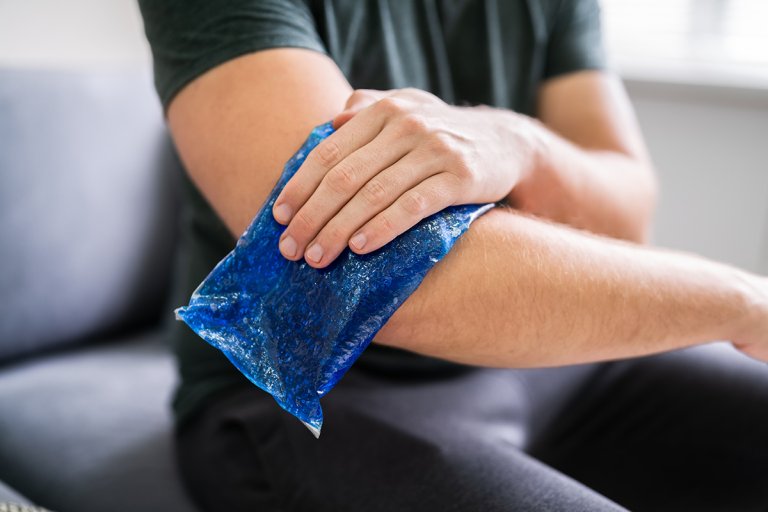
Many people wonder if heat or ice is best for dealing with the pain and swelling of muscle strains.
- Ice: Experts generally recommend you start treating a muscle strain with ice to bring down swelling and inflammation. (It can also help with pain management!). You can apply ice packs wrapped in a towel (so you don’t sting your skin) for at least 15–20 minutes at a time, several times a day for the first few days.
- Heat: After the first 48–72 hours, you may incorporate heat to improve blood flow and circulation to the area while relieving any muscle stiffness.
3. Compression
Compression with an elastic bandage can also help reduce swelling and relieve sore muscles faster. This is important because swelling puts added pressure on your muscle, which can worsen your pain and lengthen your recovery. By compressing the muscle, you can reduce the swelling — along with the discomfort.
Depending on where your muscle strain is, you can use different bandages or compression tape to secure the area. In general, begin wrapping at the end farthest from your heart — and loosen the wrap if you start to experience numbness in the area.
4. Elevate
Elevate the injured muscle above your heart whenever possible to improve circulation and reduce fluid buildup. This will help reduce muscle soreness and keep swelling to a minimum. If your strain is in your legs or lower body, use a pillow or couch cushion to keep it elevated throughout the day.
5. Stay hydrated to help muscle soreness
Did you know that proper hydration can help speed up muscle recovery, too? Staying hydrated is crucial for maintaining healthy joints and muscles, as water makes up a significant portion of cartilage. When you’re dehydrated, your body pulls fluids from tissues, leading to aches and stiffness. Drinking enough water each day is a simple way to help your body heal from muscle injuries and help muscle soreness.
6. Focus on nutrition that supports your muscle recovery
Nutrition can play a critical role in recovering from any injury. Ensuring that you’re getting enough protein and specific vitamins and minerals can support your body’s healing and help you relieve sore muscles fast. Keep these ideas in mind when planning your meals for recovery-mode:
- Pick added proteins. Protein helps reinforce your muscle tissue; slightly increasing your protein intake can get rid of muscle soreness and speed up the healing process. Chicken, beef, and fish are all healthy protein options for meat-eaters; if you’re a vegetarian, consider adding more beans, nuts, or tofu to your diet.
- Find fruits and veggies with Vitamin C. One of the best things you can do for your body during muscle recovery is to reduce inflammation; luckily, Vitamin C is full of anti-inflammatory properties to help speed up recovery. Choose from fruits and veggies like oranges, grapefruits, broccoli, tomatoes, bell peppers, and spinach.
- Opt for Omega-3 fatty acids. Foods rich in Omega-3 fatty acids can also help reduce inflammation and boost your recovery. Try foods like walnuts, chia seeds, or fish such as salmon, tilapia, or tuna.
- Choose fiber-rich options. If your muscle strain will require you to limit or change your exercise habits for a while, fiber-rich options can help promote regularity (which sometimes suffers when exercise breaks happen) while also reducing inflammation in the body. Cruciferous vegetables such as broccoli and cauliflower; beans and lentils; and whole grains are all good options to lean on.
- Reach for calcium and Vitamin D. While many people know of calcium’s role in bone health, did you know it’s also involved in muscle contractions and nerve signaling? That’s why it’s so important to get enough calcium-rich foods such as dairy products or leafy greens. Almonds, okra, and seaweed are other lesser-known foods with high amounts of calcium.
When trying to up your calcium intake, it’s also important to make sure you’re getting enough Vitamin D. That’s because it helps your body absorb the calcium you’re eating. A Vitamin D supplement can be a smart choice if you live in a Northern climate or don’t get adequate sun exposure, since Vitamin D isn’t commonly found in food—with the exception of fatty fish and liver oils.
7. Try physical therapy or physiotherapy
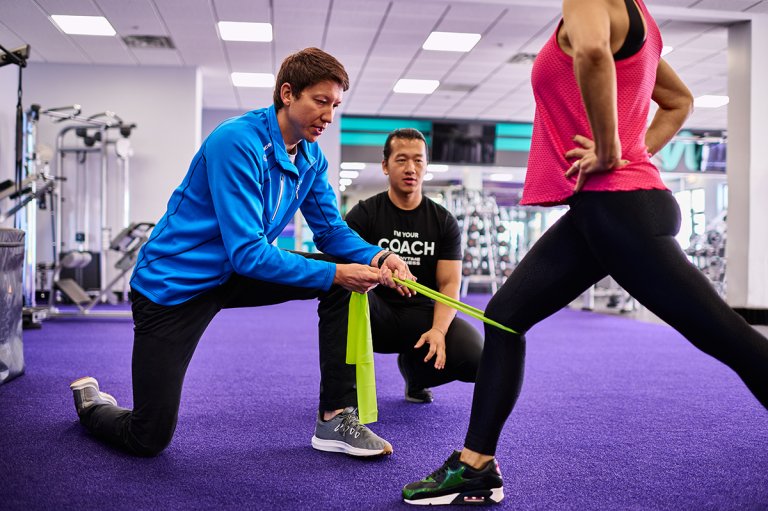
If your muscle strain is impacting your ability to perform daily activities, or if the pain isn’t going away with these tips, you may want to seek physical therapy or physiotherapy. In addition to aiding muscle recovery, these therapies can also help strengthen the areas around the injured muscle, helping you avoid future muscle injury and pain.
While they sound similar, physiotherapy often uses soft-tissue releases, stretches, and massages — while physical therapy may incorporate more of an exercise-based approach. Both types of professionals can assess your muscle injury, create a personalized plan, and guide you through safe stretches or exercises to support your recovery and help you regain strength and flexibility in the affected area.
8. Go slow when you start exercising again
While you’re recovering from your muscle strain, avoid overdoing it with your workouts. It’s wise to take a few days off from exercise all together; once it starts feeling better and you’re ready to get back in the swing of things, go slow with low-impact choices. The following workouts can help maintain blood flow to the area and prevent stiffness, without risking re-injury.
Low-impact exercises to try during muscle recovery:
- Resistance band training: Resistance band training can help you regain your range of motion after a muscle strain and even start to build more muscle strength to prevent future injury.
- Walking: As your muscle recovery process gets underway, walking is a great way to kickstart the healing process. Walking even short distances each day can strengthen damaged tissue and help muscle recovery.
- Yoga: Yoga and light stretching loosens your muscles and helps get rid of muscle soreness as you ease into your workouts. Yoga can also boost circulation and help improve your balance, which may prevent future injuries.
- Stationary bike: Have you checked out your gym’s stationary bike lately? It’s a great option that can give you a great cardio workout while still being low-impact and helping you ease back into exercise.
- Swimming: Spending some time in the water is a smart way to get back to your workouts without putting too much pressure on your joints. Swimming can all be easy on the joints while strengthening your muscles.
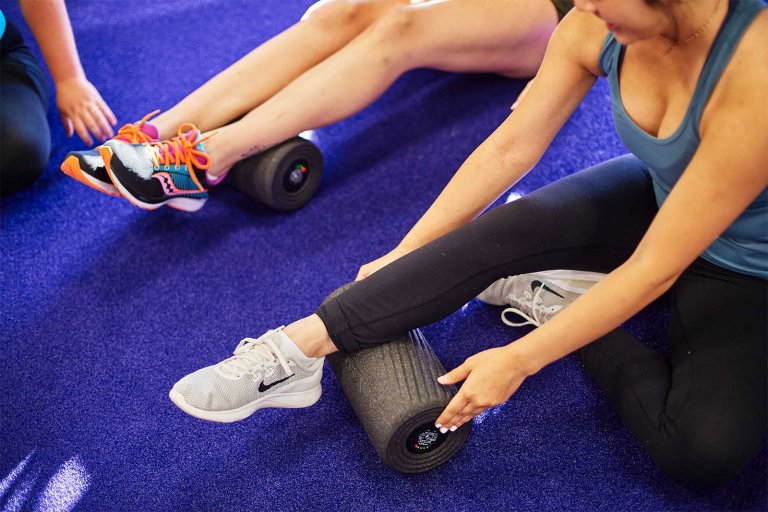
A final word on how to speed up muscle recovery
No one wants to get sidelined by a muscle strain — but unfortunately, it’s something many exercise enthusiasts will deal with at one point or another. Armed with the right recovery tips, however, you can relieve sore muscles faster and get back to your daily activities — and those heart-pumping workouts — in no time.
In the world of fitness, community and personalized coaching are your most steadfast allies — and Anytime Fitness has both! Find your nearest AF gym location and ask about one-on-one coaching, which can help you avoid muscle strain all together.

